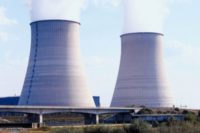In March, 2011, a magnitude nine earthquake off the east coast of Japan triggered a tsunami that killed almost 20,000 people and led to meltdowns and release of radioactive material at Japan’s Fukushima Daiichi Nuclear Power Plant. The disaster inflicted nearly half a trillion dollars in economic losses and caused the shutdown of more than 50 nuclear reactors, depriving Japan of 30 percent of its electric power capacity.
Japan now has a new Nuclear Regulatory Authority (JNRA) that enjoys insulation from the influence of nuclear energy stakeholders. JNRA has imposed stricter safety standards, reflecting many of Fukushima’s most important lessons. Managers of many nuclear facilities have undertaken safety improvements beyond JNRA’s requirements in a bid for public confidence.
But despite improvements in nuclear safety, problems remain. The quake shattered more than just the seabed east of Tohoku. It also pulverized public confidence in the government and industry’s handling of nuclear power. Polls show that a majority of the Japanese people remains deeply anxious about nuclear power. Anti-nuclear energy protesters are camped in the center of Tokyo’s government district.
Five years after Fukushima, Japan’s power industry remains hobbled, with just two of 52 reactors operating.
Restoring Japanese faith in nuclear power requires more than just establishing a new, tougher regulator. It demands greater leadership from Japanese Prime Minister Shinzo Abe. Nuclear power is central to Abe’s top priorities: economic revitalization and national security. With Japan’s nuclear plants off line, Japan sharply increased imports of oil and gas. As a result, Japan has seen its first trade deficit in decades. Japan is also more vulnerable to energy supply disruptions caused by political instability, natural disasters, and even currency value fluctuations.
The prime minister is not the only elected leader with a role in Japanese nuclear regulation. Mayors and governors have the ability to hold up nuclear plant restarts if they are not satisfied with the conditions. Japan’s Diet also has a role in overseeing Japan’s nuclear governance, and it has created special committees for this express purpose. But mayors and governors have conflicting interests as nuclear plants provide jobs and tax revenue to their constituents. Diet members find nuclear energy to be politically risky and have made only limited use of their special committees. Both local leaders and Diet offices tend to lack the technical expertise to evaluate nuclear safety, utility management structure, evacuation arrangements, etc.
Someone must be accountable for Japan’s nuclear safety, and that leadership is unlikely to come from the JNRA, the Diet, or Japan’s mayors and governors.
Abe should make clear to the Japanese people where the buck stops on nuclear safety, tell them why it is worth the risk, and put his weight behind strengthening nuclear governance. Abe has a vision for Japan, and in pursuing it he has proven willing to lead on the issues that are important, not just the ones that are popular. The fact that he is now the sixth longest serving prime minister in Japan’s post-war history suggests that Japan appreciates him for it. Nuclear energy is not popular, but it is important. Right now it needs Abe’s leadership.
Source: Ryan Shaffer is Director of Programs at the Maureen and Mike Mansfield Foundation in Washington, D.C. where he manages the U.S.-Japan Nuclear Working Group. Mr. Shaffer previously served as a research analyst for the Federation of Electric Power Companies of Japan.



